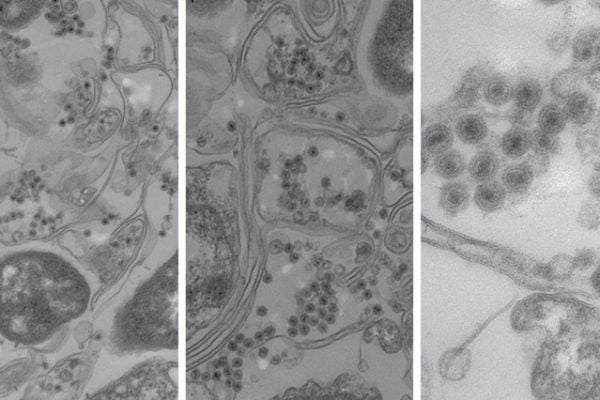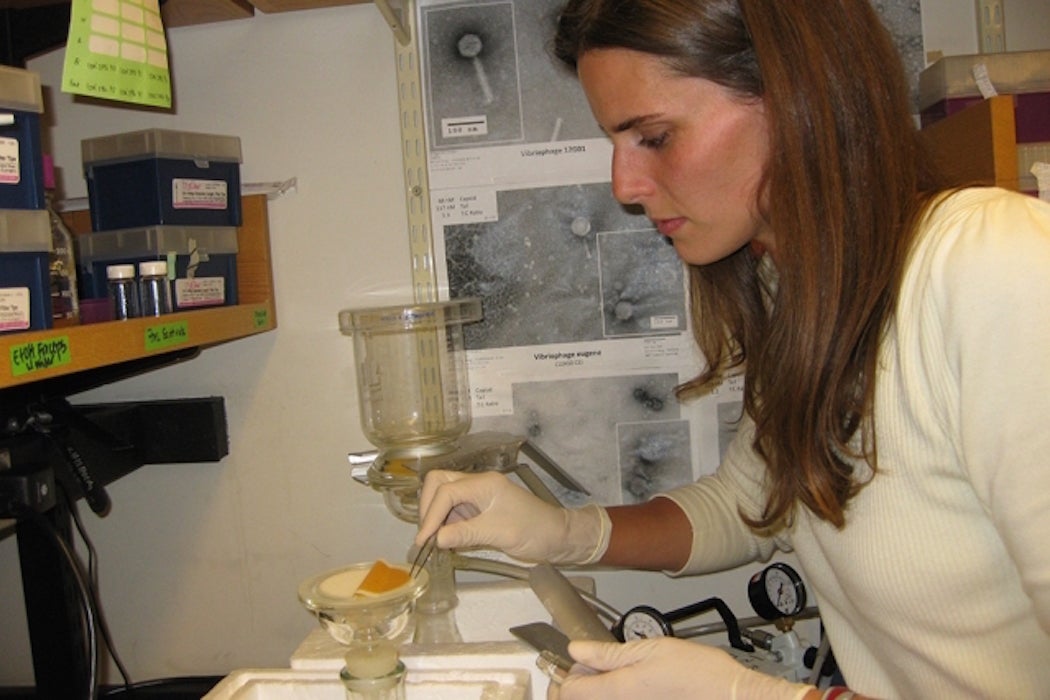It’s not every day that scientists peer into a few drops of ocean water and discover 18 new species of viruses previously unknown to science. But that’s what happened when a joint team of researchers from the Massachusetts Institute of Technology and Albert Einstein College of Medicine spent three months studying water samples gathered off the Massachusetts coast. Every millimeter of the ocean surface contains about 10 million viruses, but this particular species managed to avoid detection for a very long time. Researchers think that these new viral species may play an important evolutionary role and may affect the earth’s biogeochemical cycles, including the carbon cycle. Moreover, it’s possible that viruses of this type may also dwell inside human guts.
The new “viral family” has a different, rarer genetic make-up, including a much shorter genome. Unlike the more widely studied and abundant viruses, which have “tails” they use to penetrate and infect cells, these new species are tail-less. Because these new virus species managed to elude scientists for so long, scientists named them Autolykiviridae, after Autolykos, a character in Greek mythology notorious for being difficult to catch.
Despite the absence of tails, Autolykiviridae are very efficient killing machines. They successfully wiped out many more strains of the Vibrionaceae bacteria (a common family of marine microbes, some of which can be pathogenic to humans) than their tailed viral counterparts. According to the study’s co-author Libusha Kelly, assistant professor at Albert Einstein College of Medicine, “They caused about 40 percent of the bacterial killing observed, despite comprising just 10 percent of the viruses that we isolated.” Researchers think that Autolykiviridae may “sprout” their attacking tails on contact with cells.

The new viral species also appear to be diverse predators. When Kelly ran computational analyses, she found that Autolykiviridae type viruses prey on many species of marine microbes, potentially across the entire ocean. “We showed that viruses related to the Autolykiviridae are infecting many diverse groups of ocean bacteria as well as other bacterial groups that we cannot currently identify,” Kelly explains.
In the past, scientists considered viruses dangerous and deadly pathogens. But the more we learn about their abilities, the more important they become in biological and pharmaceutical research. In the past decade, viruses proved to be potent therapeutic agents that can kill tumor cells, deliver drugs through the blood-brain barrier, and ferret gene snippets into cells to fix malfunctioning DNA to cure genetic diseases. The ocean, which is a potent incubator of all sorts of viral organisms, may be the next “final frontier” of such research—not only in understanding marine ecology and evolution, but also in the quest for potentially therapeutic agents.
More interestingly, researchers found related viral strands in humans, which suggests that the Autolykiviridae species may play a role in our microbiome. Since viruses prey on bacteria by their nature, it’s possible that they may be affecting the gut microbial composition. “We’ve found related viral sequences in the gut microbiome,” said Kelly, “but we don’t yet know how they influence microbial communities in the gut or how important they are for health.”







